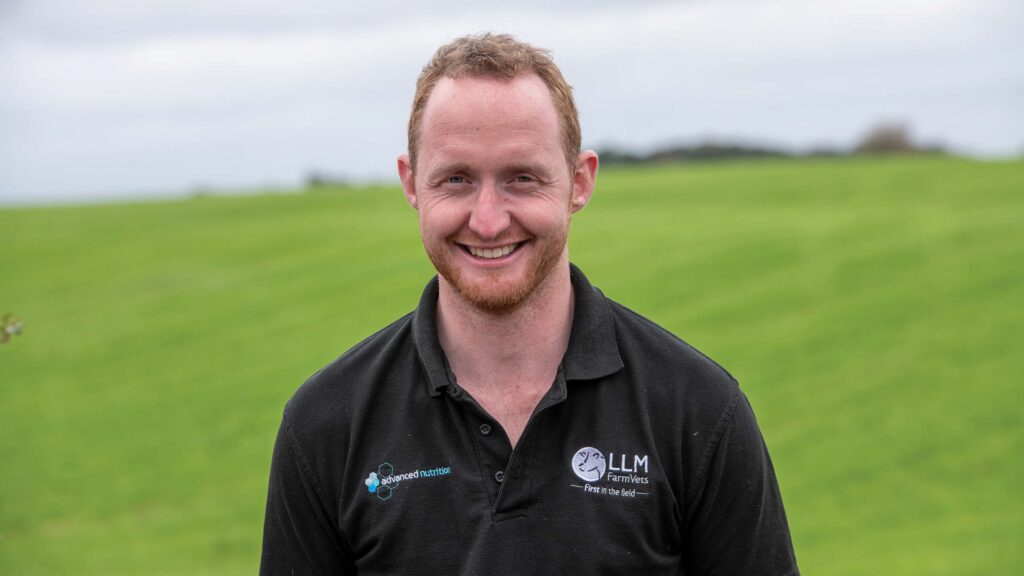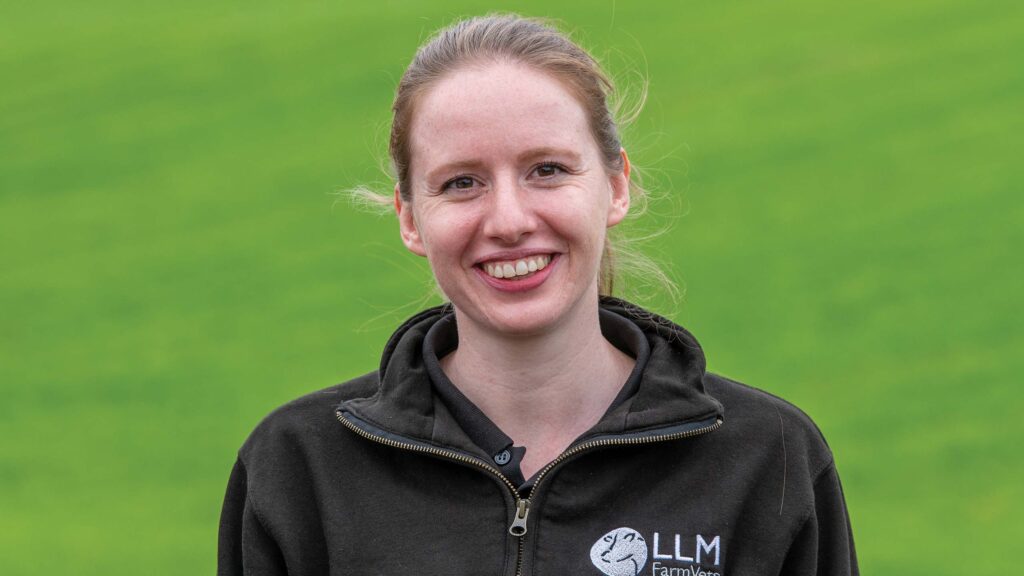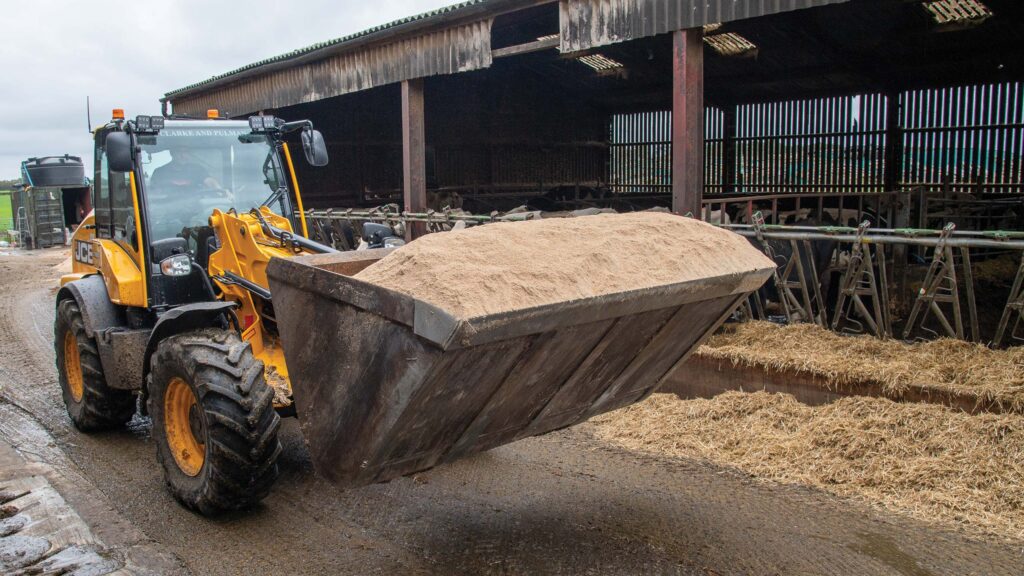How targeted mastitis treatment drove down vet and med costs
 © John Eveson
© John Eveson A concerted effort to tackle high incidences of clinical mastitis and repeat cases in high-yielding cows is helping a 200-cow Lancashire dairy farm save on vet fees and reduce milk losses.
See also: What are the most common causes of mastitis in UK herds?
Improvements in herd health management and investment in an on-farm mastitis diagnostic kit at Gibstick Hall Farm have led to a 45% reduction in injectable antibiotics use, a 25% reduction in dry cow tubes, and a 41% reduction in lactating cow tubes in the past 12 months.

Tom Hull © John Eveson
Compared with the previous year, the farm saved £12,425 on vet bills and laboratory fees, says Tom Hull, herd manager on the family farm since 2018.
This included £4,212 on antibiotics, while the cost of lactating cow tubes was reduced to just £440 this year, from £1,100 in 2024.
Repeat infection
Tom says the data from the cattle information service (CIS) and the farm’s bulk tank somatic cell count (SCC) highlighted recurring infections.
This prompted him to work with his vet, Rebecca Riley of LLM Farm Vets, to develop a targeted approach to treatment. High-yielding cows, which were hit hardest, struggled to recover and were susceptible to environmental infections, she says.
Tom adds: “We were seeing cases every week – sometimes we would have three cases a week that totalled around 120 litres lost a day.”
Farm facts: Gibstick Hall Farm, Winnmarleigh, Lancashire
- 162ha (154ha owned, 8ha rented)
- 200 milking cows and 300 youngstock
- 12,205kg average 305-day herd yield
- 3% butterfat and 3.3% protein
- Milk sold to Sainsbury’s
- Milking through a 22:22 herringbone parlour
- Four milking groups – fresh, high, first-lactation, and low yielders
- Cubicle housing year-round, except in-calf heifers, which are turned out
- Breeding herd replacements and selling about 40 newly calved heifers a year
- Artificial insemination using 100% sexed Holstein and beef semen
Treating repeat infections was a concern not only financially, but also for health and welfare reasons. “It was very frustrating dealing with repeat cases and quite stressful.
Nobody wants to deal with the dump bucket on a daily basis. I was also determined to secure a better milk contract, and with our antibiotics usage quite high, that would not have been possible,” he says.

Rebecca Riley © John Eveson
Infections in the Gibstick Hall Farm herd are caused by environmental bacteria including E coli in about 60% of cases, with remaining cases identified as coagulase-negative staphylococci (CNS) or mixed infections.
Rebecca adds that their mastitis pattern analysis highlighted that infections had an environmental lactation origin. “We tend to get mastitis cases mid-lactation due to the cows picking up infections from the milking sheds,” she says.
New strategies
In collaboration, the farmer-vet team developed protocols for milking time and changed the post-milking teat dips to a longer-lasting formula. They also switched from straw to sand bedding for dry cows, and to sawdust for milking cows.
“The dry cows used to be loose housed, and it was hard to keep their udders clean, and the risk of infection was high after dry-off. Sand is clean and cool, and there is a lower risk of infection after dry-off now,” Tom says.
“It would be nice to switch all the milk cows to sand, but we can’t as we are limited by the slurry management system we have.”
To determine if a cow has mastitis, Tom and his staff check at each milking for any heat or swelling in the udder and pre-strip the milk to detect any changes. When changes are noticed, the team follow a comprehensive decision tree process established with Rebecca.
This covers different combinations of signs and symptoms to determine the most appropriate form of treatment.
Tom also reviews cow collar data with Rebecca to ensure all aspects of the cow’s health are recorded. If a cow shows a high temperature or loses appetite, for example, the decision tree will help the team determine what treatment should be administered.

Milking cows are bedded on sawdust © John Eveson
On-farm testing
In addition, after trialling a milk culturing machine used by his vet, Tom decided to invest in one for the farm. The Mastatest kit is an automated mastitis diagnostic tool that quickly identifies the bacterial type and antibiotic sensitivity.
Rebecca explains: “If the cow [showing signs of mastitis] is eating well and has a normal temperature, we will give her an anti-inflammatory and then run the milk sample through the Mastatest. That then provides answers to a treatment protocol we have established.”

The Mastatest machine © John Eveson
The results of the milk test indicate which pathogens the cow has been affected by, and this guides the treatment plan.
“About 50% of cases don’t require antibiotics. If it is E coli or other gram-negative bacteria, and the cow is clinically well, then they will continue with anti-inflammatories, and the infection should self-resolve,” she says.
The machine will indicate three types of antibiotics that the bacteria will be sensitive to, ranked from highest to lowest sensitivity, allowing for targeted treatment. Rebecca adds that not all pathogens require antibiotics.
“There are certain pathogens that the cow will be able to resolve internally without treatment, but it is very hard to identify this without knowing which pathogen is causing the infection, which is why the Mastatest machine is so helpful,” she says.
Acting on the test information, combined with the additional changes, has seen a reduction in overall cases and a 41% reduction in lactating cow tubes.
Dry-cow therapy
Selective dry-cow therapy in the herd has also been reviewed to achieve better prevention of early-lactation mastitis.
Initially, they switched to a long-acting dry cow tube, which helped to reduce cases of early-lactation mastitis but increased withholding time, affecting bulk tank litres.
“Now we are using one that balances between the two, and we are not experiencing early-lactation mastitis cases,” says Tom.
“I can also get milk back into the tank quicker, thanks to the 35-day withdrawal period [for cloxacillin].”
Benefits
It is not just a reduction in cases that has been identified as a tangible benefit. By reducing the overall cost of medication and the impact on milk yield, Tom is making significant savings.
“On average, the cost of a case of mastitis is about £100 a cow, once you’ve taken into account the milk loss, so by reducing cases, we’re saving a lot across the herd in 12 months,” he says.
“On top of that, not only are the cows happier, but staff morale is also much improved.
“We still want to continue improving the hygiene in the milking sheds as this is where we still get environmental mastitis cases, but overall, we are much less stressed.”
The efforts on the farm have not gone unnoticed, and have resulted in being awarded the inaugural VetPartners sustainable farming health and welfare award.
Rebecca says: “Tom and the team work hard and are highly engaged with us and are always open to try new things. They are involved and receptive to suggestions, and thoroughly deserve to be recognised with this award.”
